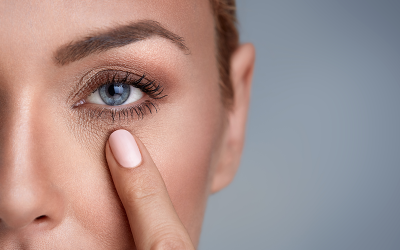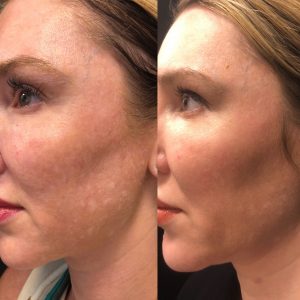It may be true that you’re only as old as you feel, but sometimes, your skin is the one thing that will give you away. As skin changes over time, some of the visible effects of aging — such as crow’s feet, brow lines and age spots — can make you look and even feel older.
Other things, such as acne scarring and sun damage, can also make you feel less confident about your appearance. Finding effective ways to treat the damage done to your skin can be a challenge, but improved technology has given way to treatments that can help restore some of the things that time takes away.
“Today, Fraxel laser treatments are able to refresh and restore the skin in ways that we simply couldn’t do in the past,” says Dr. Jennifer Holman, a board-certified dermatologist at Center for Aesthetic and Laser Medicine (CALM) in Tyler, Texas.
“It’s an effective, non-invasive way to address a variety of issues related to aging or damaged skin, and there are several different treatment options available.”
Dr. Holman says patients also often choose Fraxel laser because the FDA-approved treatments are safe and don’t require prolonged downtime like many other procedures.
“That’s a big plus for someone who wants to improve their appearance but doesn’t have the time to stay home for an extended recovery period,” she says.
When to Choose Fraxel Laser Treatments
If you’re considering Fraxel laser skin resurfacing, you want to make sure that it’s right for your particular situation.
“One of the great things about Fraxel is that it can be used on all skin types and colors,” Dr. Holman says. It’s also very effective in treating scars, whether they are surface scars like those caused by acne, or are the result of surgical scars. Fraxel can be done on skin anywhere on the body, so many people who have had gastric bypass surgery, breast augmentation or reduction, facelifts, and tummy tucks can all benefit from it.
However, there are some situations where Fraxel shouldn’t be used. It’s not a good choice for people who are predisposed to keloid formation, have had problems with pigmentation changes after surgery or who are on certain medications.
Talking with your dermatologist about any conditions or concerns that might preclude you from getting the treatment will be part of developing a personalized treatment plan.
“Your dermatologist will work with you to create a treatment plan based on your skin’s unique appearance and specific needs. Once they know what you want to accomplish, you can develop a plan to work toward those outcomes,” Dr. Holman says.
One of the benefits of Fraxel is that you’ll see some results immediately. Shortly after treatment, your skin will be smoother, softer and brighter, and the uneven coloring should begin to blend better.
“Then, over the next three to six months, your skin continues to improve,” Dr. Holman says. “That’s because the deeper layers of your skin are creating new collagen. With the proper care and skin regimen, the effects of the Fraxel laser can last for a very long time.”
What to Expect from Treatments
During a Fraxel laser treatment, your face will be numbed, and your dermatologist will deliver pinpointed laser beams through a handset directly to your skin. This resurfacing is extremely precise and can be used to target problem areas or work on larger areas of skin.
“There can be a certain amount of discomfort during the procedure, but numbing cream can help minimize this,” Dr. Holman says.
You’ll probably want to apply ice packs immediately after treatments, and you may need to keep some ice packs on hand for a few days after having the treatment. To help minimize swelling, Dr. Holman advises using an extra pillow to keep your head elevated when you lie down.
Fraxel Before and After
Downtime and Aftercare
After a Fraxel treatment, your skin will be extremely vulnerable. Although there’s no downtime that will require you to take time away from work or other activities, you do need to plan ahead and give your skin some extra TLC. Use a gentle, non-clogging skin cleanser and moisturizer; your dermatologist can recommend one that is best for you.
“One of the most important things in follow-up care is to protect your skin from the sun,” Dr. Holman says. “It’s critical to use sunscreen of at least SPF 30 or more in the days following treatments.”
The skin may feel dry, tight or itchy over the next few days as the healing continues, so many people use cold compresses for relief.
How Many Fraxel Treatments Does It Take?
Since Fraxel treatments are customized to suit each person’s skin, there’s no “set” number of treatments required. Some people may have just one treatment, but most people will have multiple treatments to help restore their damaged skin.
“It depends on the type of skin you have, what you want to accomplish and what condition you are treating,” Dr. Holman says. “On average, we’ve seen that clients tend to get the best results after three to five treatments.”
Looking to Visit a Dermatologist for Fraxel Laser Treatments?
If you’re interested in learning more about Fraxel laser treatments and what they can do for you, contact a board-certified dermatologist. We have multiple locations throughout the country, so fill out our simple online form to get in touch with us. One of our local team members will reach out to you shortly to answer your questions or schedule an appointment for you to visit us soon.
Find a location near me
or



